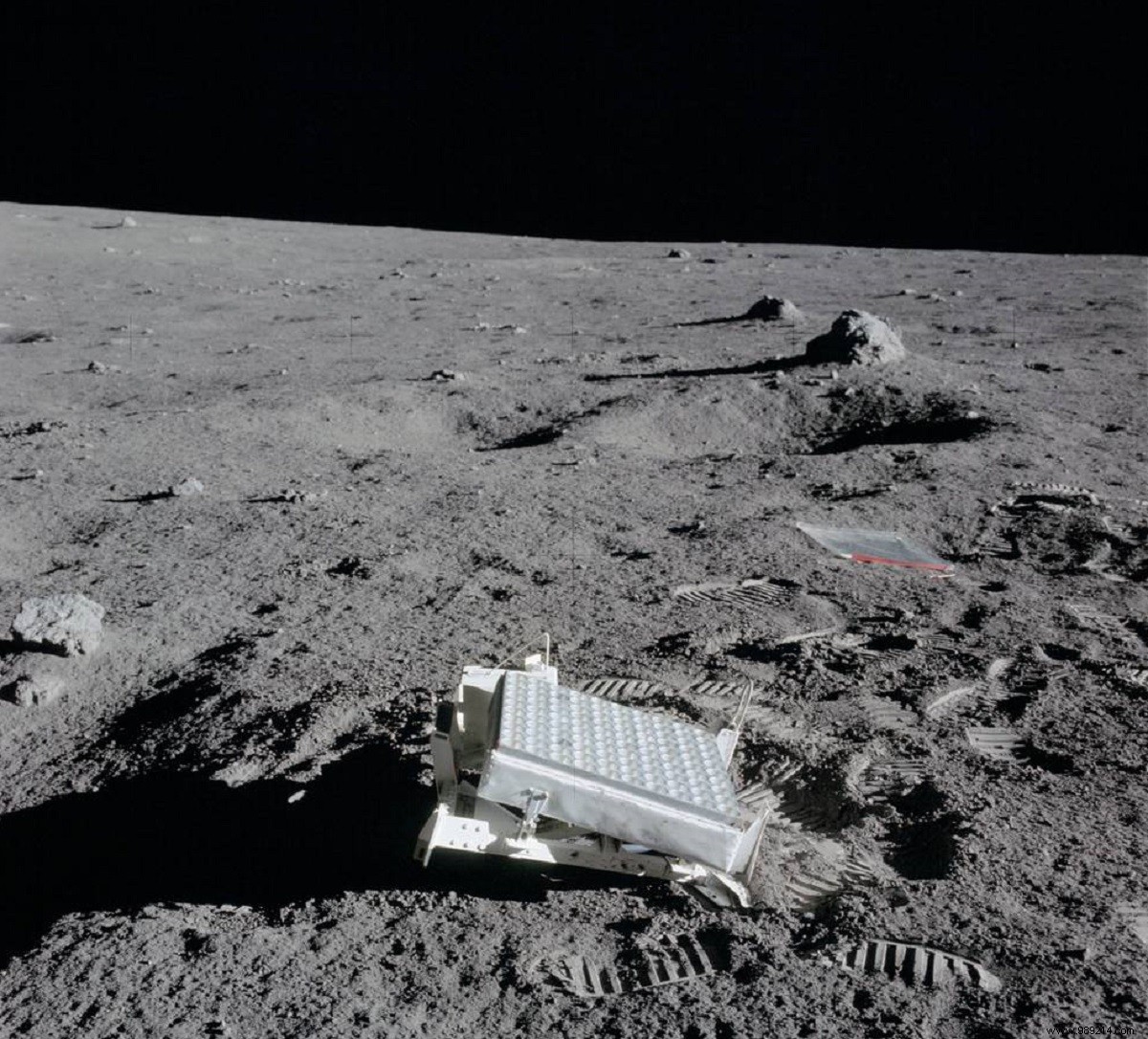For years, NASA sent laser signals to its Lunar Reconnaissance Orbiter, without success. The first "returns to sender" were finally recorded a few months ago.
Upon the arrival around the Moon of its probe Lunar Reconnaissance Orbiter (LRO), in 2009, NASA immediately began firing lasers at it. The idea:touch small reflectors the size of a pocket book in order to send these beams of light back to Earth. Over the past decade, all of these attempts at communication have failed. A few months ago, researchers finally managed to pick up several of these long-awaited signals.
This is the first time that photons have been successfully reflected back to Earth from lunar orbit. Researchers now have a new way to make measurements. This "new" communication route will also be an opportunity to understand why the same reflectors placed on the lunar surface over fifty years ago are degrading so quickly.
From 1969 to 1972, American astronauts indeed left behind, among other things, three laser reflectors . To do what ? By calculating the time it would take for these beams to bounce back and return to Earth, researchers could then, among other things, precisely measure the distance between the Moon and our planet.
These measurements have notably shown that the Moon is slowly moving away from the Earth, at a rate of about 3.8 cm per year .
Only over time the amount of light reflected from these lunar reflectors has dimmed (up to 10%). And for now, researchers don't know exactly why. However, the fact that the Moon is covered in dust probably has something to do with it.
This is why the researchers wanted to conduct this new experiment not on the lunar surface, prone to obscuring debris, but from its orbit .
Indeed, if we can receive signals bounced off the LRO reflector, scientists will then be able to compare the results with those found on the surface. This data could then tell us the degree of micrometeorite bombardment to which the Moon is subjected, and how much dust these phenomena can raise.

Reaching this target was no small feat for NASA. Indeed, it is a question of pointing a laser beam at a target of fifteen by eighteen by five centimeters moving around the Moon at more than 384,000 kilometers. Add to this, of course, the atmospheric effects of the Earth capable of deflecting the trajectory of this beam.
Initially, NASA engineers used green visible light. Unfortunately, all attempts failed. About two years ago, they finally collaborated with French researchers from the Côte d'Azur University, this time equipped with an infrared laser. This light is more effective at penetrating gases and clouds. As a result, it is less subject to atmospheric disturbances.
Result, September 4, 2018 , the Grasse laser telemetry station (Alpes Maritimes) recorded its very first signal bouncing from the LRO.
These results were then repeated on August 23 and 24, 2019 . This time, however, they managed the feat of doing so after rotating the probe so as to orient the reflector towards the Earth. By doing so, they now allow themselves to be able to take measurements without having to wait for the LRO to swing in the right direction.
So far, only a few photons have been received. According to the researchers, this is too little to determine the nature of the blockage of the reflectors positioned on the lunar surface. Repeated experiments may, however, allow us to learn more.